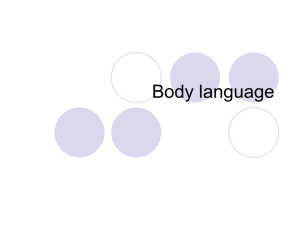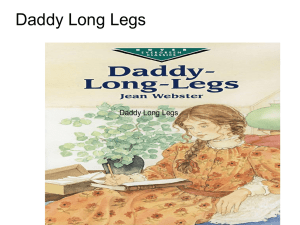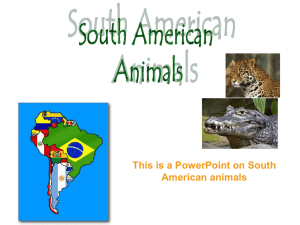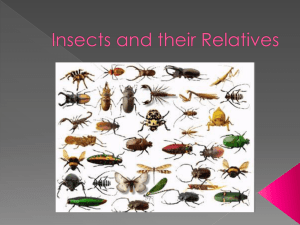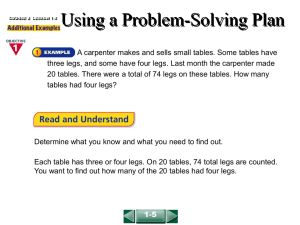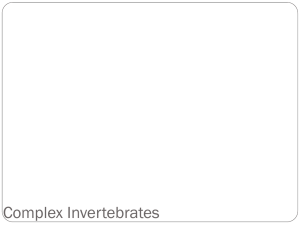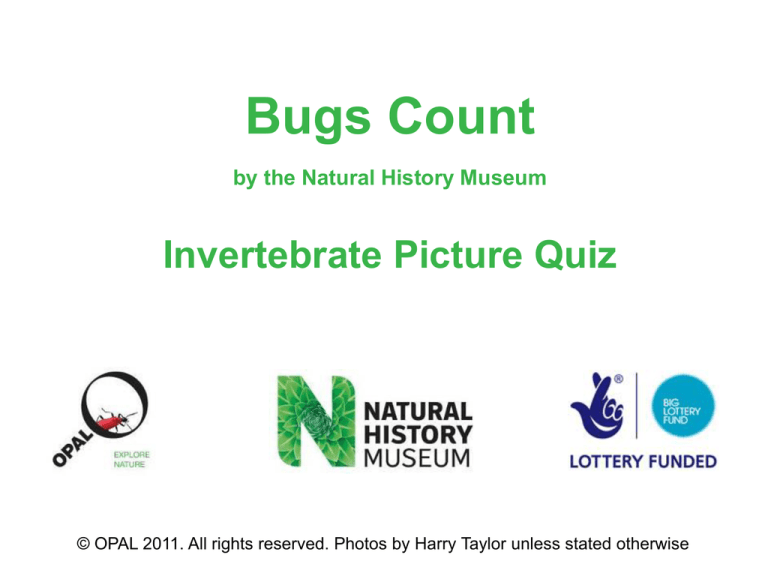
Bugs Count
by the Natural History Museum
Invertebrate Picture Quiz
© OPAL 2011. All rights reserved. Photos by Harry Taylor unless stated otherwise
• Each slide shows examples of a different group of
terrestrial invertebrate
• Look carefully at the images on each slide and try
to identify the group of invertebrates they belong to
• Click on each slide to reveal the answer, along with
key identification features
(images are not to scale)
1. Snails (no legs)
Hard, coiled shell
Soft, slimy body
2. Slugs (no legs)
Soft, slimy body,
without a coiled shell
Photo credit: Roy Anderson
3. Earthworms (no legs)
Thickened band
(saddle) in adults
Long, thin body
divided into many
segments (‘rings’)
4. Beetles (6 legs)
Biting mouthparts
Hard wing-cases,
meeting in a T-shape
5. True bugs (6 legs)
Wing-cases,
usually meet in an
X- or Y-shape
Very variable
group - includes
the tiny aphids
Piercing/sucking
mouthparts (held
underneath head)
6. True flies (6 legs)
One pair of wings
Antennae often
very short
7. Bees, wasps & ants (6 legs)
Two pairs of wings,
but this is hard to see!
Long antennae
Bees
(hairy)
Wasp
(not hairy)
Ant
8. Butterflies & moths (6 legs)
Two pairs of
wings (almost
always coloured)
Long antennae
9. Grasshoppers & crickets (6 legs)
Cricket - very
long antennae
Long back legs for jumping
Grasshopper short antennae
10. Earwigs (6 legs)
Pincer-shaped
claspers (‘cerci’)
Long, narrow brown body
11. Spiders (8 legs)
Body clearly
divided into
two parts
12. Harvestmen (8 legs)
One obvious body part
Long, thin legs
13. Woodlice (>8 legs)
7 pairs of legs
Oval shaped body,
divided into many
segments
14. Centipedes (>8 legs)
Long, thin body,
many segments
One pair of legs
per body segment
Usually orange
or yellow
15. Millipedes (>8 legs)
Body divided into many segments
Two pairs of legs
per body segment
16. Insect larvae (young)
Bugs Count Invertebrate Picture Quiz - answers
Slide number
Invertebrate group
1
Snails (Molluscs: Gastropoda)
2
Slugs (Molluscs: Gastropoda)
3
Earthworms (Annelida)
4
Beetles (Insects: Coleoptera)
5
True bugs (Insects: Hemiptera)
6
True flies (Insects: Diptera)
7
Bees, wasps and ants (Insects: Hymenoptera)
8
Butterflies and moths (Insects: Lepidoptera)
9
Crickets & grasshoppers (Insects: Orthoptera)
10
Earwigs (Insects: Dermaptera)
11
Spiders (Arachnids: Araneae)
12
Harvestmen (Arachnids: Opiliones)
13
Woodlice (Crustaceans: Isopoda)
14
Centipedes (Chilopoda)
15
Millipedes (Diplopoda)
16
Insect larvae (various insect groups)




